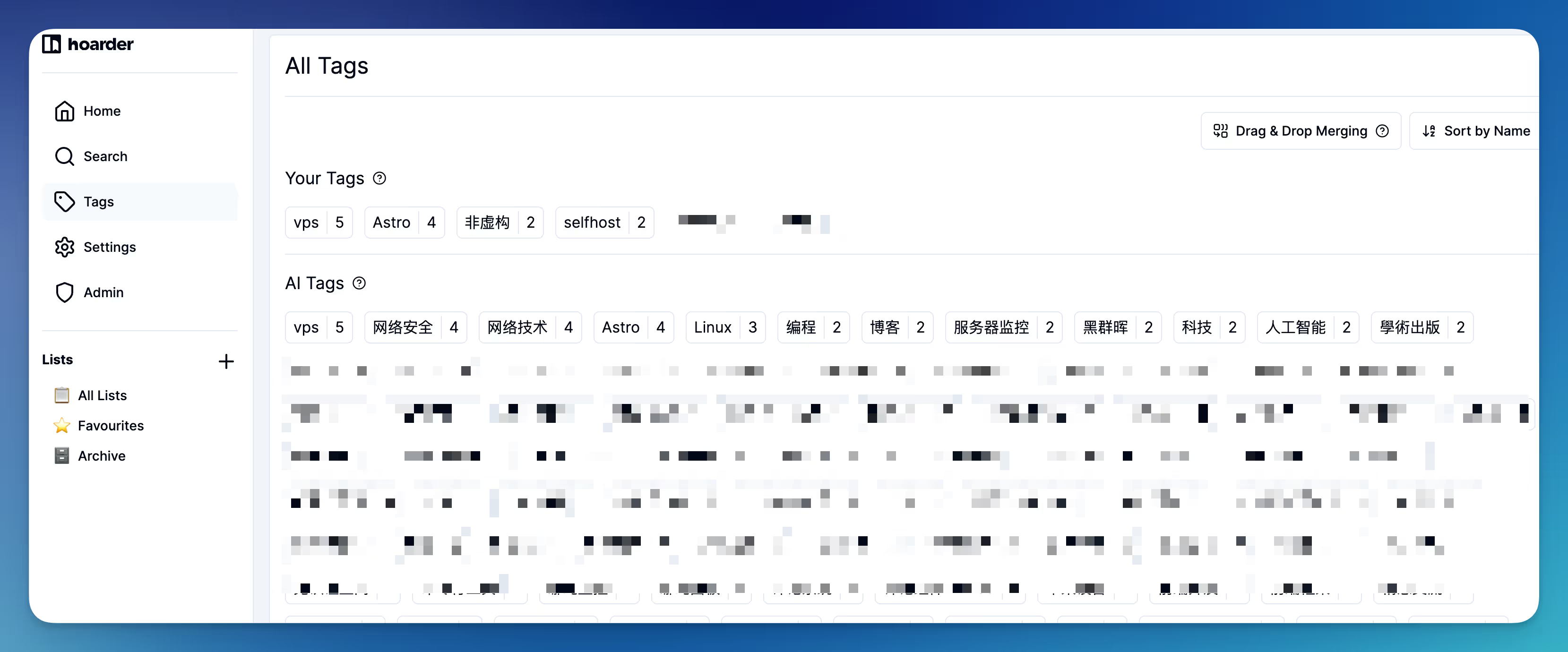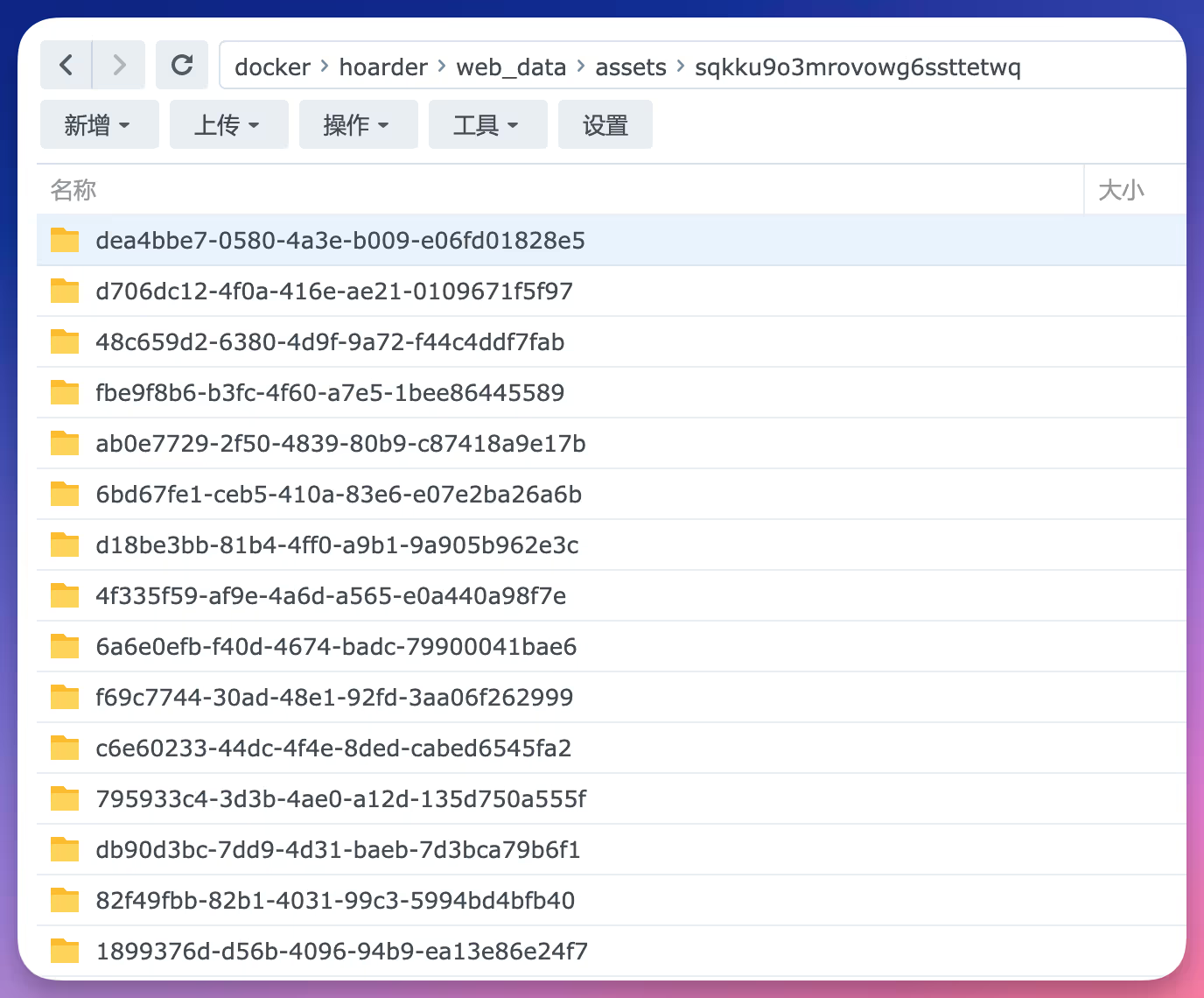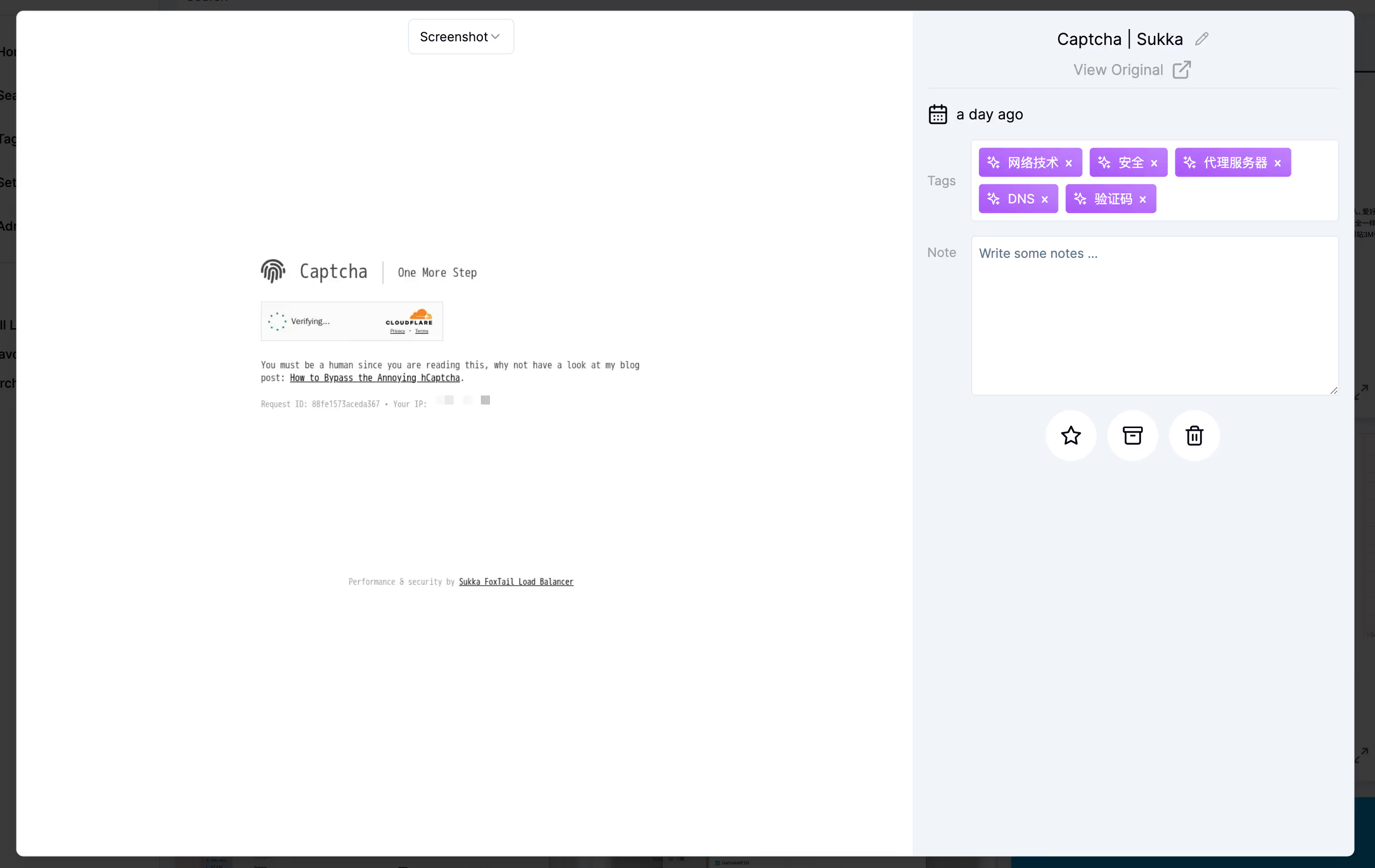Table of contents
Toggle TOC
Why leave Cubox
In an age of information overload, a good web clipper is a must for digital hoarders. I used Cubox for a long time, but several issues pushed me to self‑host Hoarder instead.
-
Privacy: The mainland edition of Cubox applies content controls. Some clipped pages could not be shared due to “force majeure”. Keeping a local copy on my NAS is more trustworthy.

-
Pricing: The free tier is limited to 200 items; VIP costs ¥198/year. If you already have a NAS, self‑hosting is cheaper over time.

-
No need for extra fluff: Cubox kept adding features (AI summaries, etc.) that I don’t need. I use Readwise for reading; I want a reliable “cold storage” for web pages.
Self-Hosting Installation Guide
Hoarder is an open-source project available on GitHub. For detailed installation instructions on Linux machines or Synology systems, consult the official documentation or follow the comprehensive tutorial from NasDaddy.
I highly recommend using Docker for installation. Here’s a reference Docker Compose YAML configuration:
version: "3.8"
services:
web:
image: ghcr.io/hoarder-app/hoarder-web:${HOARDER_VERSION:-release}
restart: unless-stopped
volumes:
- data:/data
ports:
- 3000:3000 # change to any port you prefer
env_file:
- .env
environment:
REDIS_HOST: redis
MEILI_ADDR: http://meilisearch:7700
DATA_DIR: /data
redis:
image: redis:7.2-alpine
restart: unless-stopped
volumes:
- redis:/data
chrome:
image: gcr.io/zenika-hub/alpine-chrome:123
restart: unless-stopped
command:
- --no-sandbox
- --disable-gpu
- --disable-dev-shm-usage
- --remote-debugging-address=0.0.0.0
- --remote-debugging-port=9222
- --hide-scrollbars
meilisearch:
image: getmeili/meilisearch:v1.6
restart: unless-stopped
env_file:
- .env
environment:
MEILI_NO_ANALYTICS: "true"
volumes:
- meilisearch:/meili_data
workers:
image: ghcr.io/hoarder-app/hoarder-workers:${HOARDER_VERSION:-release}
restart: unless-stopped
volumes:
- data:/data
env_file:
- .env
environment:
REDIS_HOST: redis
MEILI_ADDR: http://meilisearch:7700
BROWSER_WEB_URL: http://chrome:9222
DATA_DIR: /data
# OPENAI_API_KEY: ...
depends_on:
web:
condition: service_started
volumes:
redis:
meilisearch:
data:Create a .env file yourself (compose won’t generate it) and restart the stack whenever you change values:
HOARDER_VERSION=release
NEXTAUTH_SECRET=xxxx # random string
MEILI_MASTER_KEY=xxxx # random string
NEXTAUTH_URL=http://localhost:3000 # local URL of Hoarder or your reverse-proxy URL
## Optional below
OPENAI_BASE_URL=https://xxx.com/v1 # OpenAI official endpoint or third-party compatible endpoint
OPENAI_API_KEY=sk-xxxxx # OpenAI API key
INFERENCE_LANG=chinese
INFERENCE_TEXT_MODEL=qwen2-72b-instruct # model used for auto-tagging; qwen2-72b-instruct works great in my setupWhat I like
AI‑assisted tagging
Great for hands‑off clipping — I don’t need to decide tags each time, but still get useful categorization for later search.

What could be better
Proprietary snapshot format
Snapshots are stored in .db files. I’d love an option to keep an .html snapshot or a .png image for maximal portability.

Some sites are hard to capture
Hoarder drives a headless Chrome to capture snapshots. Some blogs behind Cloudflare’s bot checks may block it (e.g. Sukka’s post):
